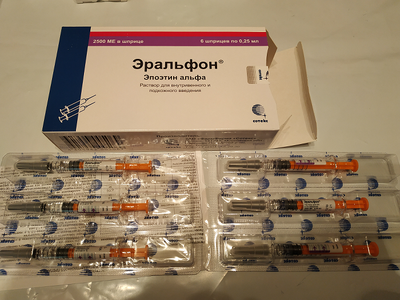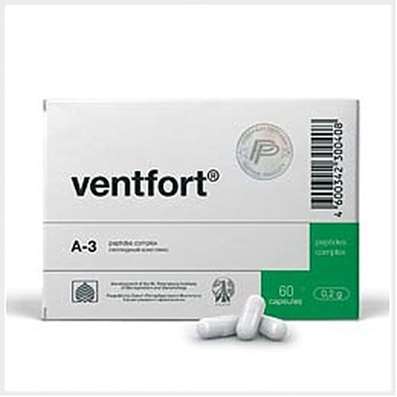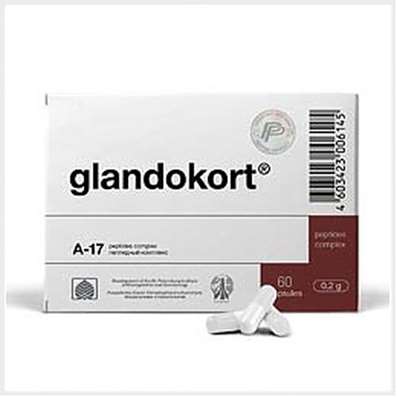Instruction for use: Pantoprazole (Pantoprazolum)
I want this, give me price
Characteristic of Ademetionin
Proton pump inhibitors
Nosological classification (ICD-10)
K21 Gastroesophageal reflux
Biliary reflux esophagitis, gastrocardiac syndrome, Gastroesophageal reflux disease, Gastro-oesophageal reflux disease, Non-erosive reflux disease, syndrome gastrocardiac, Remhelda syndrome, Erosive reflux esophagitis, Ulcerative reflux esophagitis
K25 Gastric ulcer
Helicobacter pylori, Pain syndrome in gastric ulcer, Pain syndrome in gastric ulcer and duodenal ulcer, Inflammation of the gastric mucosa, Inflammation of the gastrointestinal mucosa, Benign gastric ulcer, The disease of the stomach and duodenum, asotsiirovannoe with Helicobacter pylori, Aggravation gastroduodenita on the background of peptic ulcer, Exacerbation of peptic ulcer, The aggravation of gastric ulcer, The organic gastrointestinal disease, Peptic ulcer of the stomach and duodenum, Postoperative gastric ulcer, Recurrent ulcers, Symptomatic gastric ulcers, Chronic inflammatory disease of the upper gastrointestinal tract, associated with Helicobacter pylori, Helicobacter pylori eradication, Erosive and ulcerative lesions of the stomach, Erosive lesions of the stomach, The erosion of the gastric mucosa, Peptic ulcer disease, Stomach ulcer, Gastric lesion, Ulcerative lesions of the stomach, Symptomatic ulcers of the stomach and duodenum
K26 Duodenal Ulcer
Pain with duodenal ulcer, Pain syndrome in gastric ulcer and duodenal ulcer, The disease of the stomach and duodenum, asotsiirovannoe with Helicobacter pylori, Exacerbation of peptic ulcer, The worsening of duodenal ulcer, Peptic ulcer of the stomach and duodenum, Relapse of duodenal ulcers, Symptomatic ulcers of the stomach and duodenum, Helicobacter pylori eradication, Erosive and ulcerative lesions of the duodenum, Erosive-ulcerative lesions of duodenal ulcers associated with Helicobacter pylori, Erosive lesions of the duodenum, Duodenal ulcer, Ulcerative lesions of the duodenum]
K27 Peptic ulcer, unspecified
Perforation of peptic ulcer, Drug-induced gastrointestinal ulcers, medication ulcers, Peptic ulcer of the digestive tract, Peptic ulcer with Helicobacter pylori, peptic ulcer, Damage of gastrointestinal mucosa caused by NSAID, Symptomatic ulcers digestive tract, stress ulcer, Stress gastric ulcer, Stress damage to the mucous membrane, stress ulcer, duodenal ulcer Stress, Stress ulcer, Stressful GI ulcers, Erosive-ulcerative lesions of the gastrointestinal tract, The erosion of the gastrointestinal tract, Erosion of the mucosa of the upper gastrointestinal tract, The erosion of the gastrointestinal mucosa, gastrointestinal ulcer, ulcer drug, peptic ulcer, postoperative ulcer, stress ulcer, Ulcerative lesions of the gastrointestinal tract, Acute stress ulcer gastrointestinal tract, Symptomatic gastrointestinal ulcers, Complications of peptic ulcers
K86.8.3 * Zollinger-Ellison Syndrome
Adenoma of the pancreas ulzerogennosti, gastrinoma, Zollinger-Ellison Syndrome, gastrinoma
Code CAS 102625-70-7
Characteristics of the substance Pantoprazole
Substituted benzimidazole derivative, white or almost white crystalline powder, soluble in water. Solubility increases with increasing pH.
Pharmacology
Pharmacological action - anti-ulcer.
It accumulates in the tubules of the parietal cells of the stomach and transforms into an active form - cyclic sulfenamide, which selectively interacts (forms a covalent bond) with the H + -K + -ATPase. Inhibits H + -K + -ATPase of parietal cells, disrupts the transfer of hydrogen ions from the parietal cell into the lumen of the stomach and blocks the final stage of hydrophilic secretion of hydrochloric acid. Dose-dependent long-term suppresses basal and stimulated (regardless of the type of stimulus - acetylcholine, histamine, gastrin) secretion of hydrochloric acid. The values of the average effective dose in in vivo studies range from 0.2–2.4 mg / kg. The maximum effect is manifested only in highly acidic (pH 3) medium (at higher pH values, it remains practically inactive).
It has antibacterial activity against Helicobacter pylori and contributes to the manifestation of the anti-helicobacter effect of other drugs. BMD is 128 mg / l. The therapeutic effect after a single dose occurs quickly and persists for 24 hours. Provides a rapid reduction of symptoms and healing of a duodenal ulcer. When taken at a dose of 40 mg, pH values> 3 remain more than 19 hours. After 2 weeks of treatment (40 mg daily), complete healing of the duodenal ulcer is observed in 89% of patients. After 4 weeks of treatment (40 mg), 88% of patients show complete healing of a gastric ulcer. The frequency of recurrence of peptic ulcers after treatment is 55%. Within 4 weeks of treatment at a dose of 40 mg / day, it provides complete remission in 82% of patients with gastroesophageal reflux disease stage II-III (according to Savary - Miller), after 8 weeks - in 92%. Complete endoscopic remission in 57% of children 6–13 years of age with gastroesophageal reflux disease Ic / II stage (according to Vandeplas) is achieved after 4 weeks of therapy at a dose of 20 mg / day. During 4–8 weeks of treatment, the level of gastrin in plasma increases 1.5 times. Maintenance therapy (40–80 mg daily for more than 3 years) in patients with peptic ulcer was accompanied by a slight increase in the number of enterochromaffin-like (ECL-) cells.
Experimental studies of carcinogenicity indicate that prolonged use of pantoprazole is associated with an increased risk of hyperplasia of ECL cells and the occurrence of gastric carcinoid, liver adenoma and carcinoma, and neoplastic processes in the thyroid gland.
Quickly and completely absorbed after ingestion. Absolute bioavailability is 70–80% (average 77%). Cmax - achieved in 2–4 hours (on average, after 2.7 hours). Plasma protein binding is 98%. T1 / 2 - 0.9–1.9 h, the volume of distribution - 0.15 l / kg, Cl - 0.1 l / h / kg. Very weakly penetrates through the BBB, secreted into breast milk. Taking antacids or food does not affect AUC, Cmax and bioavailability. Pharmacokinetics is linear in the dose range of 10–80 mg (AUC and Cmax increase in proportion to the dose increase). T1 / 2 and Cl values are independent. Metabolized in the liver (oxidation, dealkylation, conjugation). It has a low affinity for the cytochrome P450 system, CYP3A4 and CYP2C19 isoenzymes are mainly involved in the metabolism. The main metabolites are demethylpanthoprazole (T1 / 2 - 1.5 h) and 2 sulfated conjugates. It is excreted mainly with urine (82%) in the form of metabolites, in a small amount is found in the feces. Not cumulated. T1 / 2 in patients with liver cirrhosis increases to 7–9 hours, with renal failure it increases slightly, but the T1 / 2 of the main metabolite reaches 2–3 hours. AUC and Cmax are slightly higher in the older age group.
Use of Pantoprazole
Duodenal ulcer or stomach ulcer in the acute phase, including associated with taking NSAIDs, or refractory to therapy with histamine H2 receptor blockers; gastroesophageal reflux disease (moderate and severe forms); Zollinger-Ellison syndrome; combined antihelicobacter eradication therapy in patients with peptic ulcer to reduce the frequency of relapses.
Contraindications
Hypersensitivity, hepatitis and cirrhosis of the liver, accompanied by severe liver failure.
Restrictions for use
Liver dysfunction, child age (experience of use in children under 6 years old is absent).
pregnancy and lactation
In pregnancy, it is possible only under strict indications, when the benefits to the mother outweigh the potential risk to the fetus.
Category of action on the fetus by the FDA - B.
At the time of treatment should stop breastfeeding.
Side Effects
On the part of the digestive tract: diarrhea; rarely, dry mouth, increased appetite, nausea, belching, vomiting, flatulence, abdominal pain, constipation, increased transaminase activity, gastrointestinal carcinoma (single case).
From the nervous system and sensory organs: headache; rarely - asthenia, dizziness, drowsiness, insomnia; in some cases - nervousness, depression, tremor, paresthesia, photophobia, visual disturbances, tinnitus.
From the genitourinary system: in rare cases - hematuria, edema, impotence.
From the side of the skin: in isolated cases - alopecia, acne, exfoliative dermatitis.
Allergic reactions: rarely - rash, urticaria, pruritus, angioedema.
Other: rarely - hyperglycemia, myalgia; in rare cases - fever, eosinophilia, hyperlipoproteinemia, hypercholesterolemia.
Interaction
May reduce the pH-dependent absorption of ketoconazole and other drugs. Compatible with drugs metabolized with the participation of the cytochrome P450 enzyme system: phenazepam, diazepam, digoxin, theophylline, carbamazepine, diclofenac, naproxen, piroxicam, phenytoin, warfarin, nifedipine, metoprolol, ethanol. Does not affect the effectiveness of hormonal contraceptives.
Overdose
Symptoms: not described.
Treatment: If an overdose is suspected, supportive and symptomatic therapy is recommended. Dialysis is ineffective.
Route of administration
Inside, in / in.
Precautions substances pantoprazole
Before treatment, malignant diseases of the esophagus and stomach should be excluded (symptomatic improvement may delay the correct diagnosis and treatment). The diagnosis of reflux disease must be endoscopically confirmed. Not recommended for patients with non-ulcer dyspepsia. In elderly patients and in violation of kidney function, it is not recommended to exceed the dose of 40 mg / day. In severe liver failure, the dosing regimen should be adjusted: 1 tab. every 2nd day, under the control of the level of liver enzymes (with its increase, the abolition of the drug is shown).

 Cart
Cart





